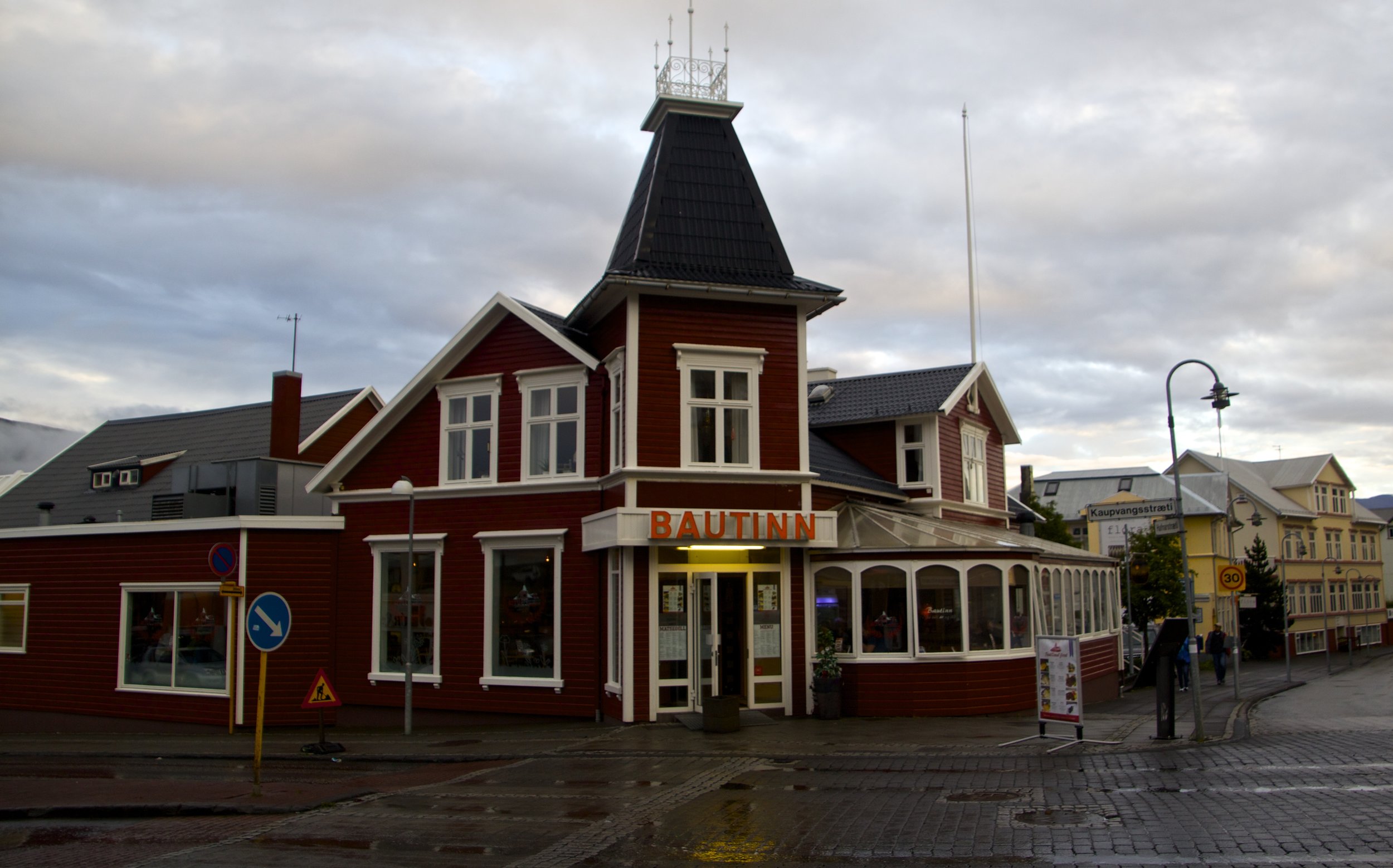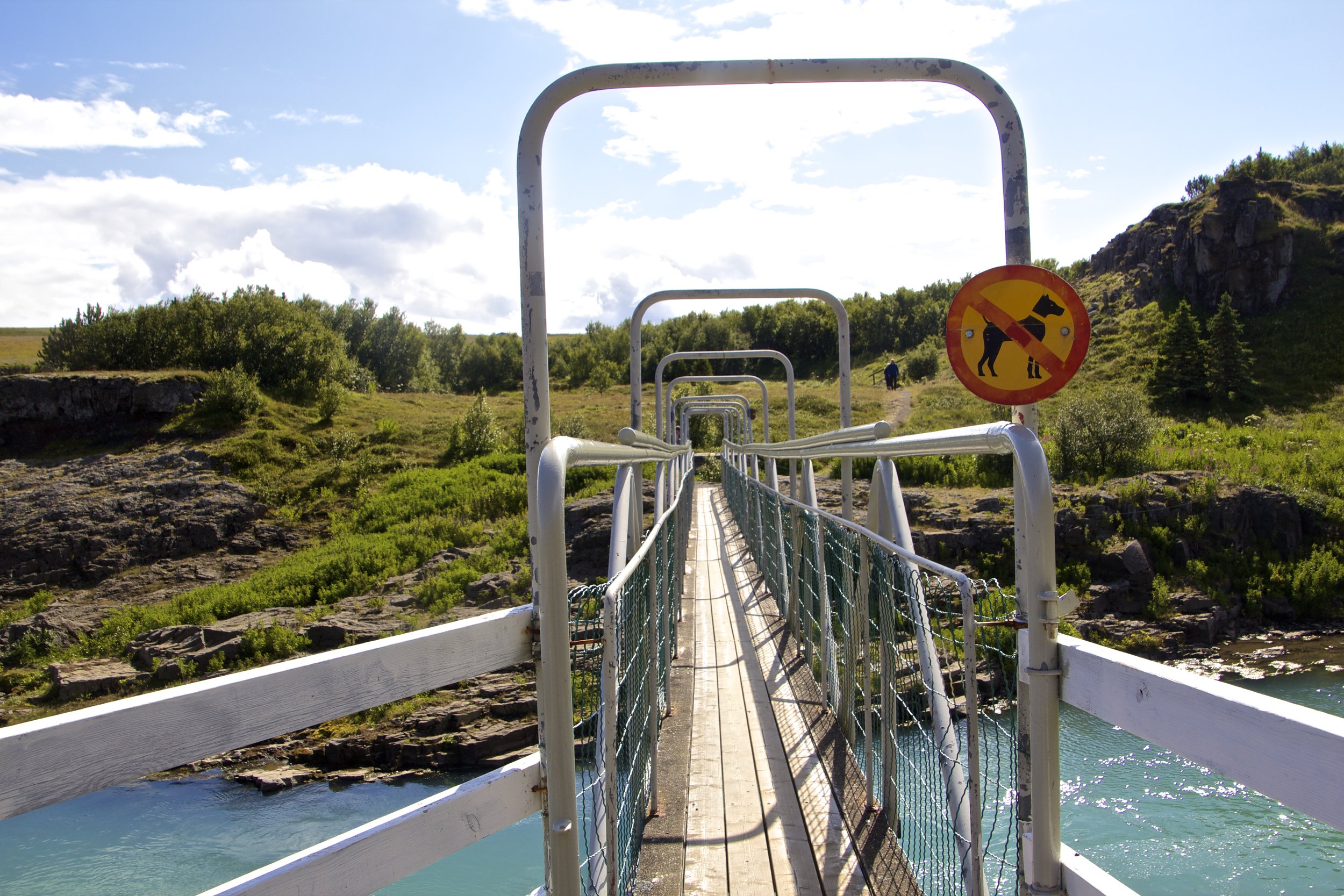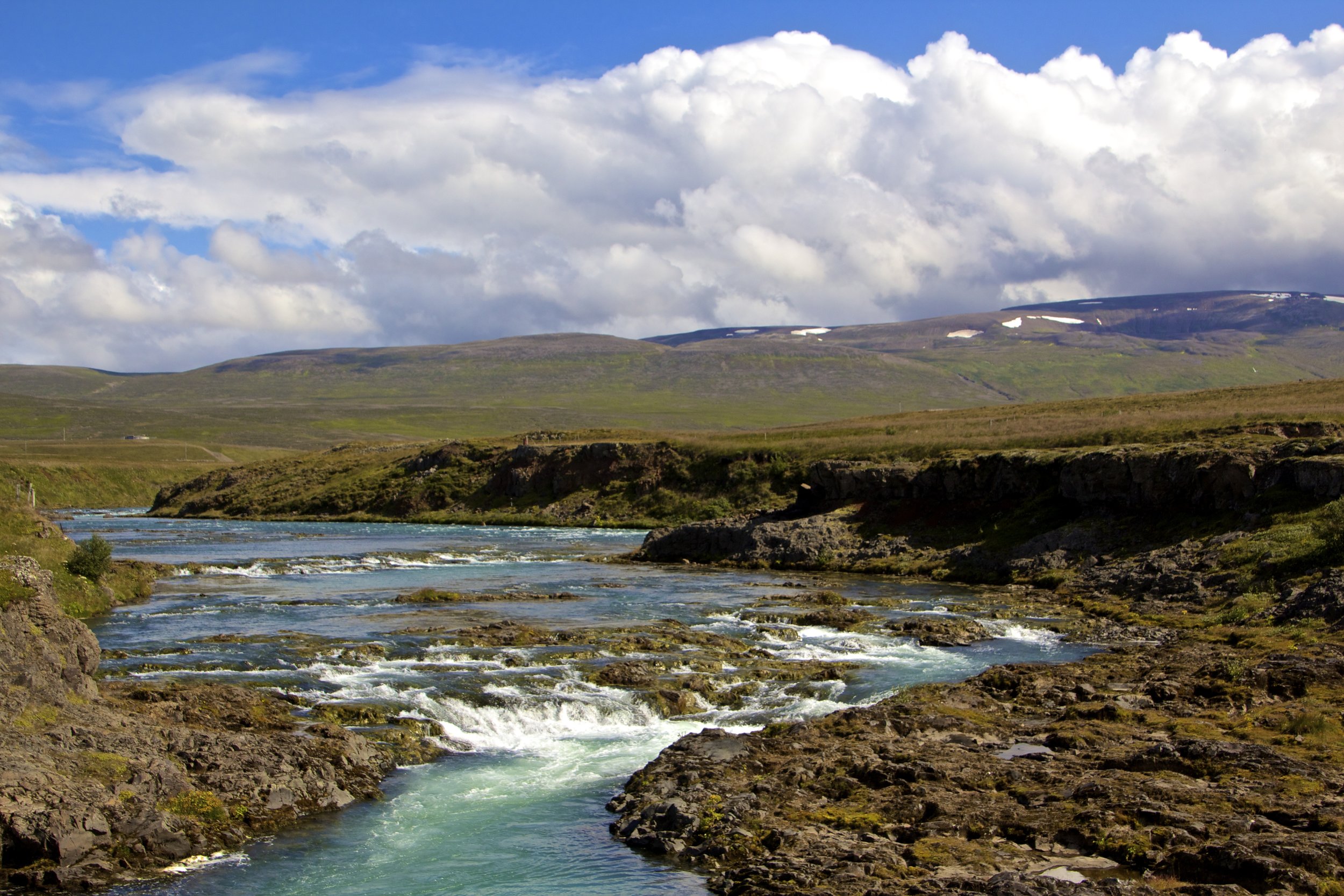All About Akureyri
Though it’s population is less than 19,000, Akureyri [ah – kur – rare - ee] is actually Iceland’s second largest city behind Reykjavík, and the capital of North Iceland. The first mention of Akureyri in historical records came in 1562 when a woman was sentenced to death for adultery. Soo… not off to a great start.
Akureyri is barely shy of the Arctic Circle, but even in the dead of winter, its harbor remains ice-free. This fact alone has secured Akureyri’s place in history. Historically it has been an important city and port for Iceland, and today it is the only point of access to Grímsey Island (a small Icelandic island north of the Arctic Circle). During WWII, Iceland was neutral but played host to allied troops, many of whom ended up being stationed here in Akureyri. In fact, you’ll find abandoned US Military encampments randomly throughout Iceland.
Today it’s a substantial little town, with pretty much every modern amenity you could want. Fishing, historically, has been the most important industry, and this holds true even today, although Iceland's recent surge in tourism is also bringing in substantial revenue. Also, the University of Akureyri was founded in 1987, and has been growing quickly ever since.
Driving In From The Southeast
In our last article, we left off at the Aldeyjarfoss waterfall, which marked the end of our drive through Sprengisandur and our entrance into Northern Iceland. Below I've mapped out our drive into Akureyri:
Emerging from the vast volcanic wastes of the Sprengisandur desert, and driving down from the highlands, the greenery of coastal Iceland resumed as quickly as it had fallen away. After long, difficult hours spent listening to our car rattle as it fought the elements of Iceland’s notorious interior, we found ourselves sitting in relative silence. Everything was still. Aside from the wind blowing softly, and the rustling of the grass around us, there was nothing. We were parked in the middle of a dirt road with high, green ridges on either side of us. Ahead of us we saw a closed gate.
Did we take a wrong turn somewhere?
I got out of the car and approached the gate. Beyond the gate I could see a small farm. Somebody was operating a large piece of machinery in a field in the distance. I couldn’t tell if this gate lead to the main road, or onto their property. I tenuously approached the gate, and finding that it was unlocked, swung it open. We drove our car through and then stopped to close the gate behind us.
From there we started down this dirt road, towards the sea. It would be more than an hour before we reached the ocean, but with green grass all around us, our spirits were high. Even though this road was made up of dirt and gravel, it was much smoother than the roads of Sprengisandur, so it wasn’t long before we were flying through the countryside, making our way through this long and winding valley. We would pass small houses here and there and, occasionally, people riding horses on the side of the road. From the window of the car, I would make eye-contact with some of them, and they would smile at me. Icelanders are so nice!
Eventually we made our way back to paved roads, and I don’t know if I’ve ever experienced such a smooth ride. After driving all of Sprengisandur in a day, it felt like I was sledding down a mountain made of whipped cream.
As we drew nearer to Akureyri, the weather began to worsen. Over rugged coastal mountains and through brilliant green valleys we drove, the sky above us darkening all the while. Eventually cold rain began pelting our windshield, making the roads slick. The clouds hung low overhead, covering the mountaintops around us. But just then, we turned a corner, and we entered the biggest, most spectacular fjord I had ever seen: Eyjafjörður. Mammoth snow-covered cliffs reached out towards each other in the distance, forming the mouth of this fjord. Beyond this formation there was nothing but open ocean before the ice of the North Pole. And at the base of this fjord, Akureyri was waiting for us.
It was not long before we saw Akureyri glowing in the distance, at the foot of daunting, snowy mountains. Off shore, lonely fishing vessels had laid anchor for the night in the frigid Icelandic waters. Each vessel had a single light that shone out across the water. These lights felt like an extension of the city lights glimmering in the distance. This would be the northernmost city that I had ever visited, and as we rolled to town, I was not disappointed. Or, at least, not initially...
Exploring Akureyri
Our time in Akureyri was overcast and rainy. However, in the shadow of the snowy mountains immediately to the south, Akureyri's dark, inclement demeanor made it feel like Christmas was just around the corner. The main drag of Akureyri is along a street called Hafnarstræti. This street is mostly populated by colorful, Nordic buildings that looked better suited for Santa's elves than they did for people. It was a very pretty walk, but it didn't last long. It takes about 5 minutes to walk through this main stretch of town.
From there, we embarked up a steep hill on the southern side of town. Hiking up the steep roads, it wasn't long before we could see out over the entire fjord! It was a pretty gorgeous view.
We were enjoying this view, but eventually we decided to make a turn and dive deeper into the neighborhoods of Akureyri. Walking through these neighborhoods, I must confess, I was a little disappointed. I had envisioned the entire city looking like Hafnarstræti, but after a few minutes of walking, we had entered the suburbs. It wasn't much different from your typical American suburbs. The houses were pretty American looking, with fences, yards, and driveways. Cars were in the driveways, and children's toys were often in the yard. And around the neighborhood we would see libraries, schools, and swimming pools. I would later be told that Icelanders love to go swimming. It was a weird parallel universe that I had slipped into.
However, in the cracks of Icelandic suburbia, a colder, much more Soviet vibe persisted. Some houses took the form of bleak, cookie-cutter boxes, colored with shades of grey. There were muddy, poorly maintained public parks with weathered statues of Icelandic folk heroes, who now overlooked the parking lots of Icelandic strip malls. This also felt very Communist-esque. It was less than scenic much of the time, but at least it was real. The backdrop of North Iceland's wild mountains was a strong and constant presence, reminding us of the geography that we were surrounded by.
Akureyrarkirkja
Just like Reykjavík has Hallgrímskirkja, Akureyri has Akureyrarkirkja. It's a smaller church for a smaller city, but the two are remarkably similar. Both exude a similar chrome, Ayn Rand-esque, 1940s futuristic feel. Today it feels like a very dated take on modernism, but they are both still very interesting. Akureyrarkirkja was consecrated in 1940, and towers over Akureyri from it's spot atop a steep hill. It's a tiring walk up the stairs to the front gate, so I was pretty sweaty when I got up there. But you know what they say: "Sweat is just fat crying because you punched it in the face."
Inside Akureyrarkirkja, a random boat hung from the ceiling. This is part of a Nordic tradition that was meant to keep loved ones safe at sea. And it makes perfect sense in a fishing town like Akureyri. I'm sure the fishermen here have weathered some rough, cold storms. This has undoubtedly been and ever-present threat throughout the history of Akureyri.
The church was pretty cool, but to me, the most remarkable thing about this church was the stained glass windows. They looked like frames from a comic book! It was really unique. Take a look:
Interestingly enough, some of these windows (not these cartoony windows, rather, the windows pictured above, behind the pulpit) were allegedly taken from St. Michael's Cathedral in Coventry, England, which was destroyed in a German blitz during WWII. The destruction of this church, though tragic, came as no surprise. This raid was expected, so steps had been taken ahead of time to protect the piece of history that is(was) St. Michaels. The stained glass windows of the church, which dated back to the 1400s, were removed and put into hiding. However, in the chaos of the 2nd World War, these stained glass windows were, um, misplaced, and their whereabouts remained a mystery for 70-odd years.
These windows would, today, be worth almost $35,000, so it was sort of a big deal when they went missing. The story went that this stained glass had found its way to the British black market for antiques, and had been sold to an Icelandic buyer who had then put them on display in a couple of churches here in Akureyri. While that myth was eventually debunked (you can read about it here), an enduring, quirky friendship remained between Akureyri and Coventry that endures to this day. So that's a fun story.
Where To Stay
Akureyri Backpacker's Hostel
Akureryri is supposedly a major tourist hub, with hotels and bars and etc., but I didn't see much evidence of this. Akureyri Backpacker's Hostel seemed to be the the clear choice from the limited selection of accommodations that were available, and I was relieved that they even had beds for us. It cost 3,800 ISK (32.65 USD) per night to stay here, and I thought that it was worth every penny. It's one my favorite hostels I've ever stayed at.
Why did I like this place so much? In essence, because it was so cozy! You're going to hear me throw the word "cozy" around a lot as we make our way through Northern Iceland. Lots of coziness. It helped that this hostel was always packed with people who were talking, laughing, and drinking large pints of cold beer. It felt very communal and warm in there, and I made some new friends.
Coffee Shops
Kaffi Ilmur
Address: Hafnarstræti 107b, 600 Akureyri
Hours: [8am - 11pm | 7 days per week]
This might have been the coziest little coffee shop in Iceland. They also stay open until 11pm every day, which is awesome in a place like Akureyri, where you'll likely be getting in late from your daily Icelandic adventures. So we rolled in around 10pm, and I ordered what turned out to be one of the better Chais that I have ever had. The big, soft, gooey cookie I got didn't hurt either.
Kaffi Ilmur sits right on Hafnarstræti, which is the main drag of Akureyri. Less than a 5-minute walk from the city center, it's a pretty prime piece of real estate. It's also next to another piece of work from Guido van Helten, who was featured in our Street Art Guide in Reykjavík. So you should definitely check it out.
Bláa Kannan
Address: Hafnarstræti, Akureyri, Iceland
Hours: [9am - 11:30pm | Monday - Friday]
………..[10am - 11:30pm | Saturday - Sunday]
This place is exactly in the epicenter of Akureyri, at the intersection between Hafnarstræti and Kaupvangsstræti, very close to Akureyri Backpackers Hostel. We stumbled into this place as our last stop on our way out of the city and I'm so glad we did! Walking into this place, it felt like we were in the workshop with Santa's elves. The interior was made up completely of natural wood, chandeliers, and baked goods... Iceland is, just, the coziest.
We went straight to the bakery's glass counter and began ogling the plethora of tasty treats that were stored there. We would walk away with tiny, white paper bags overflowing with sugary pastries. Pair that with a couple cups of coffee from the house barista and we were ready to roll. I'd definitely recommend a stop through this place on your way into or out of Akureyri.
Driving Westward
As we drove out of Akureyri, the weather improved almost instantaneously. I don't know if it's a 'thing' that Akureyri always has bad weather, but it was certainly true for us. In my mind, Akureyri will forever be cold, overcast, and cozy.
To leave, we set out heading west. That day we would drive across Iceland's Northeastern Region (Norðurland Eystra), of which Akureyri is the capital, and the Northwestern Region (Norðurland Vestra). As always, the terrain was stunningly, tirelessly green. We drove through arctic tundra, fertile farmland, inhospitable mountains, and river deltas alike, stopping occasionally on the side of the road to take pictures. Below is some of what we saw...
From here, our destination was Iceland's wild Westfjords. The Westfjords is the most sparsely populated, rugged, and remote province in all of Iceland. It's also the place where, during our travels in Iceland, we spent the most time, so get ready to see and hear a lot about it!
Stay tuned for the next leg of our road trip!
The destination: Ísafjörður
And now, some post-WWII-era Icelandic jazz...























































